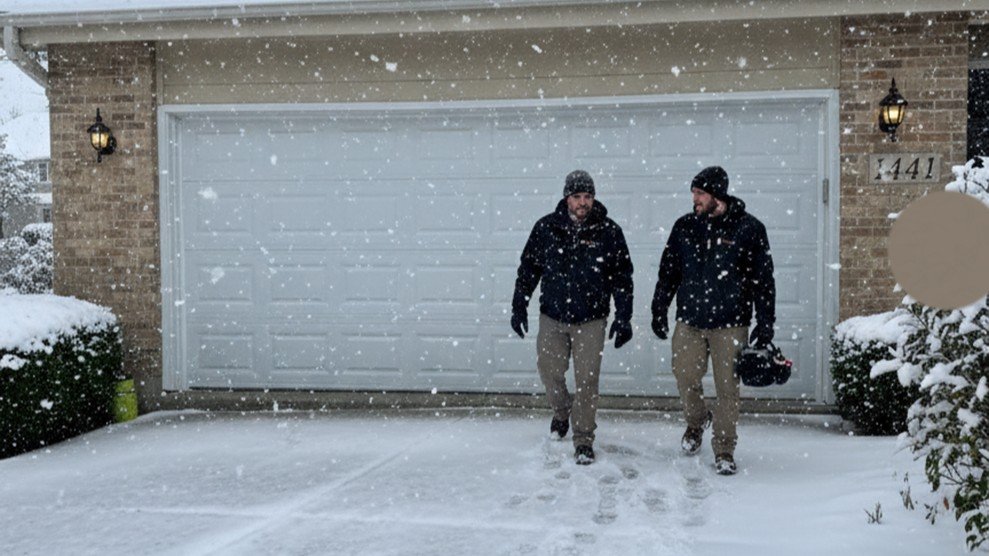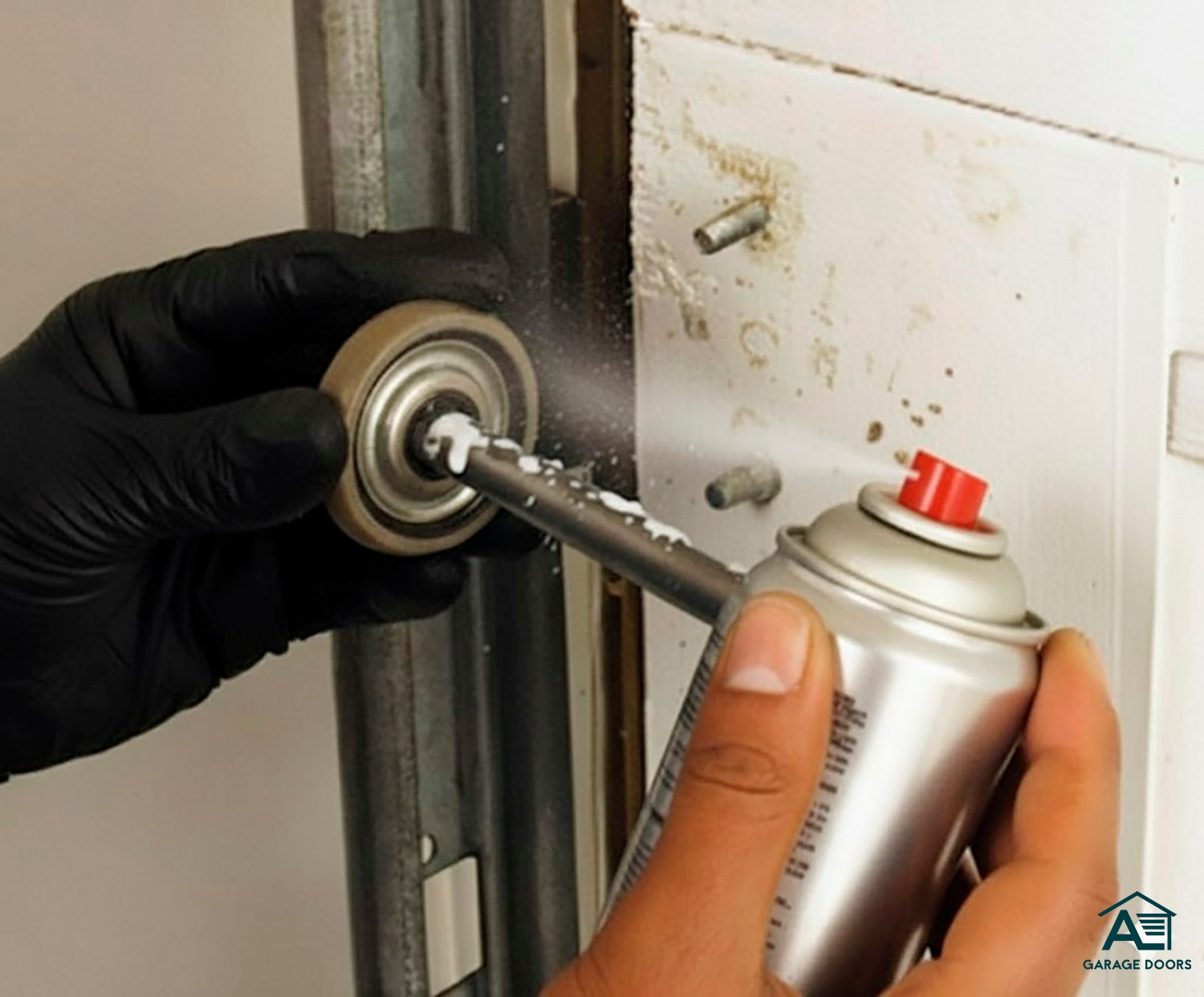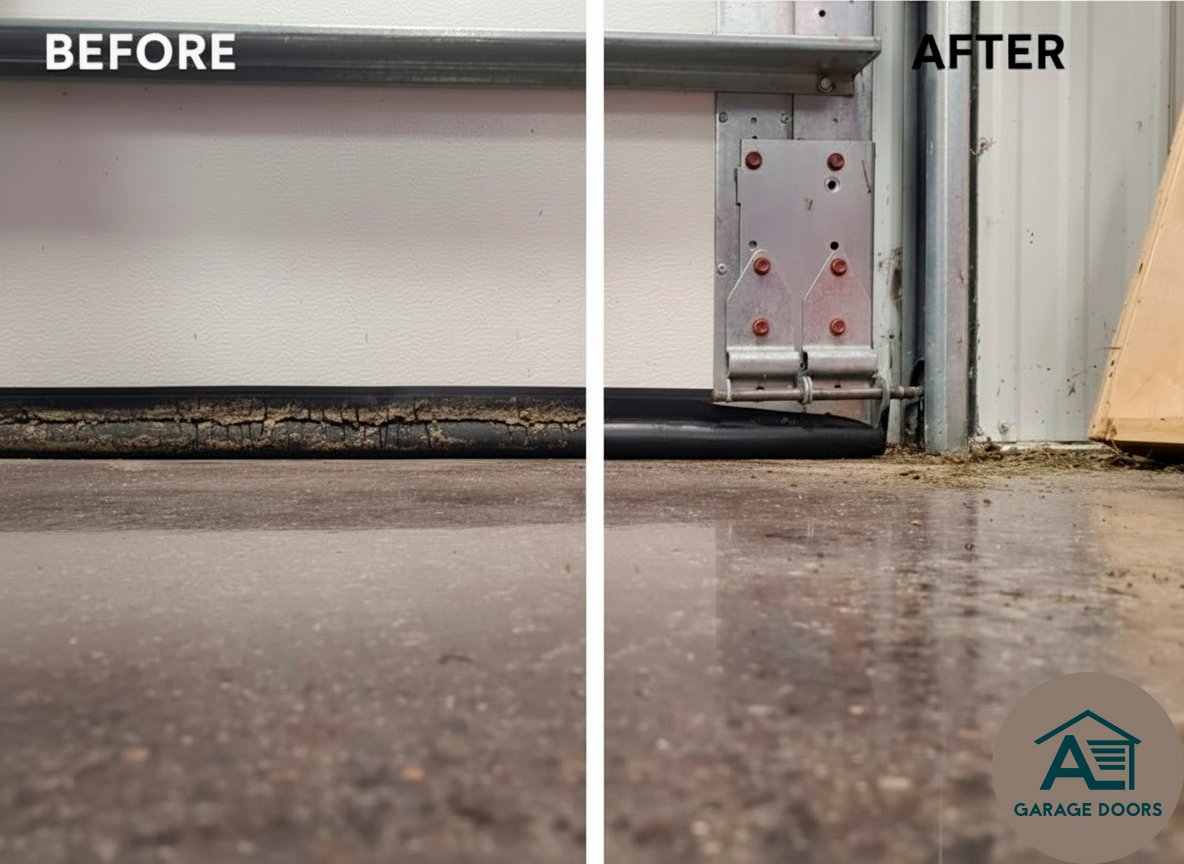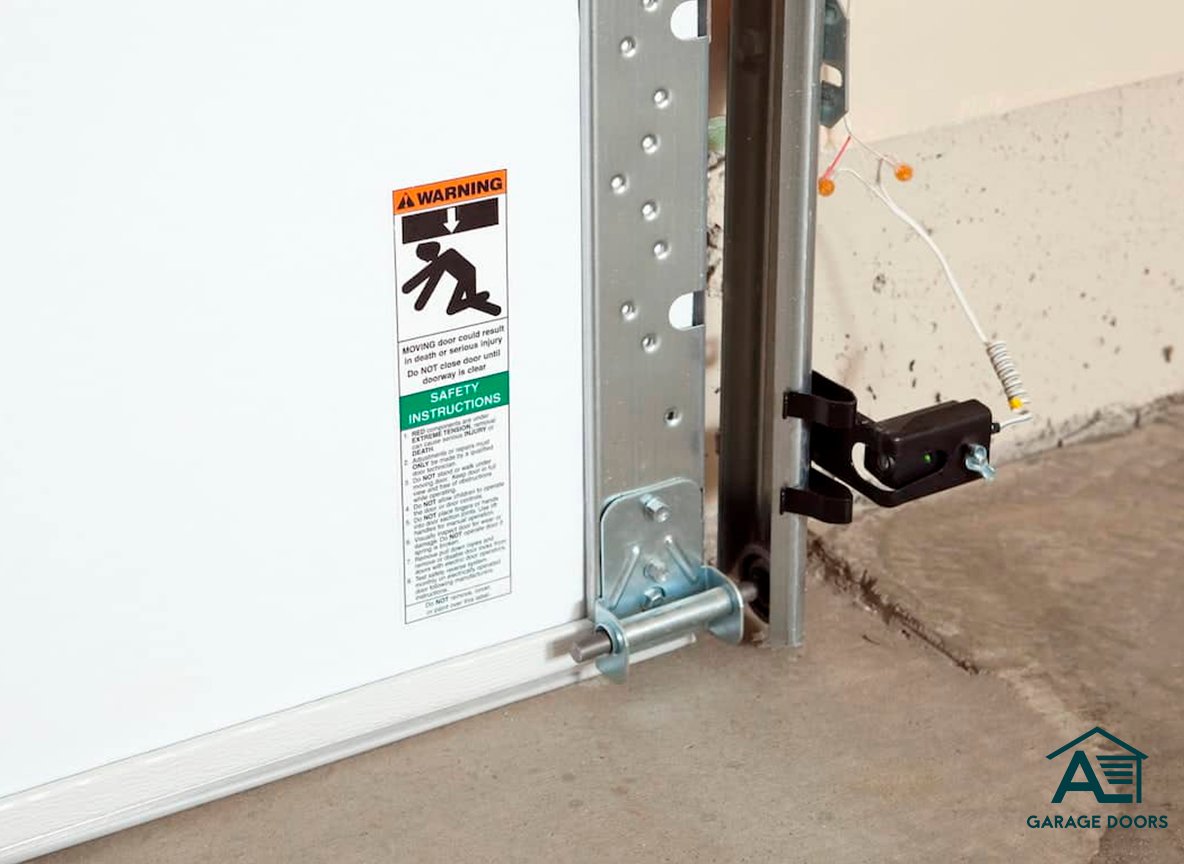How Cold Weather Affects Your Garage Door Springs
Keep your springs safe this winter—why freezing Chicago temps make steel brittle and what to do before the next cold snap.
How Cold Weather Affects Your Garage Door Springs in Chicago and Across Illinois
When temperatures drop below freezing, your garage door becomes one of the most vulnerable systems in your home. In Chicago and surrounding Illinois suburbs, cold air, ice, and road salt can turn normal wear into a costly emergency. Understanding how winter affects your garage door springs helps prevent breakdowns, improve safety, and extend the life of your opener.

1) Cold Makes Steel More Brittle
Garage door springs are made of tightly wound steel. As temperatures fall near and below 32°F (0°C), the metal contracts and loses flexibility, becoming more brittle. This makes springs more likely to snap under stress—especially when the door is heavy with frost or snow.
If you suddenly hear a loud “pop” and your door no longer opens, one of your torsion springs has probably broken. Always contact a certified garage door technician in Chicago to handle replacements safely.
Local tip: Keeping your garage a few degrees warmer (around 40–50°F) by sealing cracks or upgrading insulation can reduce metal stress and help prevent spring failure.
2) Lubricants Thicken in Freezing Temperatures
Cold weather also affects how your garage door rollers and bearings move. Standard lubricants can harden or thicken, causing the door to move slower and putting extra strain on the opener motor.

Use a low-temperature silicone or lithium-based garage door lubricant designed for winter. Apply a thin coat to rollers, hinges, and spring coils every month during the cold season—but never grease the tracks, as this attracts dirt and causes drag.
3) Tension Spikes Lead to Sudden Breakage
When temperatures drop, metal contraction increases the tension on your springs. Add snow or ice on top of your garage door panels, and that extra weight can push old or fatigued springs to their breaking point.
Early warning signs
- Louder grinding or squeaking noises
- The door feels heavier than usual
- The door won’t stay halfway when lifted manually
- Opener hesitates or struggles to lift
If you notice any of these symptoms, schedule a garage door spring tune-up before the next cold front.
4) Ice, Salt, and Rust Accelerate Wear
In Chicago winters, salt and moisture from your driveway often stick to the bottom section of your door. Over time, this mixture leads to corrosion on steel cables, springs, and hinges, thinning the metal and weakening structural integrity.

Wipe down the lower panels regularly after snowstorms, and check for orange rust dust or pitting along your springs. Replacing worn parts early is far cheaper than emergency service in freezing conditions.
5) The Weather Seal and Sensors Matter Too
Your bottom weather seal plays a key role in winter performance. If it’s cracked or stiff, cold air and water can enter, freezing around your door tracks. Replace it before the season to improve insulation and prevent ice buildup.

Keep your photo-eye safety sensors clean and properly aligned—about six inches from the floor with steady indicator lights. Cold air and humidity can cause false reversals if the lenses are foggy or misaligned.
Winter Garage Door Maintenance Checklist (Chicago & Illinois Suburbs)
- Lubricate springs, rollers, and hinges monthly (low-temp rated)
- Run a mid-travel balance test
- Replace cracked bottom seals to reduce drafts and ice
- Clean and align sensors (~6 inches from the floor)
- Keep garage temperature above 40°F when possible
When to Call a Professional
If your garage door feels heavy, makes loud noises, or you spot frayed cables or rusty coils, don’t wait. A certified technician can inspect spring tension, track alignment, opener force, and bearings to ensure everything is balanced and safe.
At AL Garage Doors, we provide same-day service in Chicago and nearby suburbs including Naperville, Bolingbrook, Schaumburg, Oak Park, Cicero, and Evanston. Our team offers free winter readiness checks and fast spring replacements when you need them most.
Why Local Maintenance Matters
Local climate conditions in Illinois—especially Chicago’s mix of lake-effect moisture and freezing wind—make garage door care a seasonal necessity. Having a local technician familiar with Chicago weather ensures your door gets the right materials, lubricants, and balance adjustments for the climate.
Regular winter maintenance keeps your system safe, prevents unexpected breakdowns, and saves you money in the long run.
Get Expert Garage Door Service in Chicago
Don’t wait until the first freeze catches your door off guard. Call (773) 757-8067 or book a free quote online for expert garage door spring repair, tune-up, and maintenance across Chicago and Illinois suburbs.
